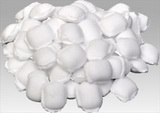Dimethyl terephthalate (DMT) is a versatile chemical intermediate used to manufacture polyesters, industrial plastics, adhesives, inks, herbicides and many other products. Despite its wide applicability and universalism, DMT output has been steadily decreasing over the last decade. This long-term trend remains firmly entrenched and will be hardly reversed in future. For most grades of polyester used in textiles and food and beverage containers, it is more economical to use purified terephthalic acid (PTA) rather than DMT in polyester chain. Moreover, the extensive use of paraxylene in PET production spurs the process of phasing out of DMT. In this situation, DMT is considered an alternative intermediate for PET production. With domination of Europe and North America in dimethyl terephthalate production (these regions account for 32.5% and 24% in DMT capacity, respectively) and stagnant consumption from Asia Pacific, the global DMT market hardly has a potential to revive its production volumes in future.
Dimethyl terephthalate (DMT): production and consumption in 2014, by region (metric tons)

Of course, firm paraxylene (PX) pricing, like the recent price uptake in Europe in March-April 2016, may improve DMT market economics from time to time, but upstream PX price fluctuations could be hardly considered a sufficient factor for robust growth of the DMT market. DMT is commonly derived from PX and methanol, while DMT prices closely follow upstream price developments for PX and methanol.
More information on the dimethyl terephthalate (DMT) market performance can be found in the insightful research study “Dimethyl Terephthalate (DMT): 2016 World Market Outlook and Forecast up to 2020”.
